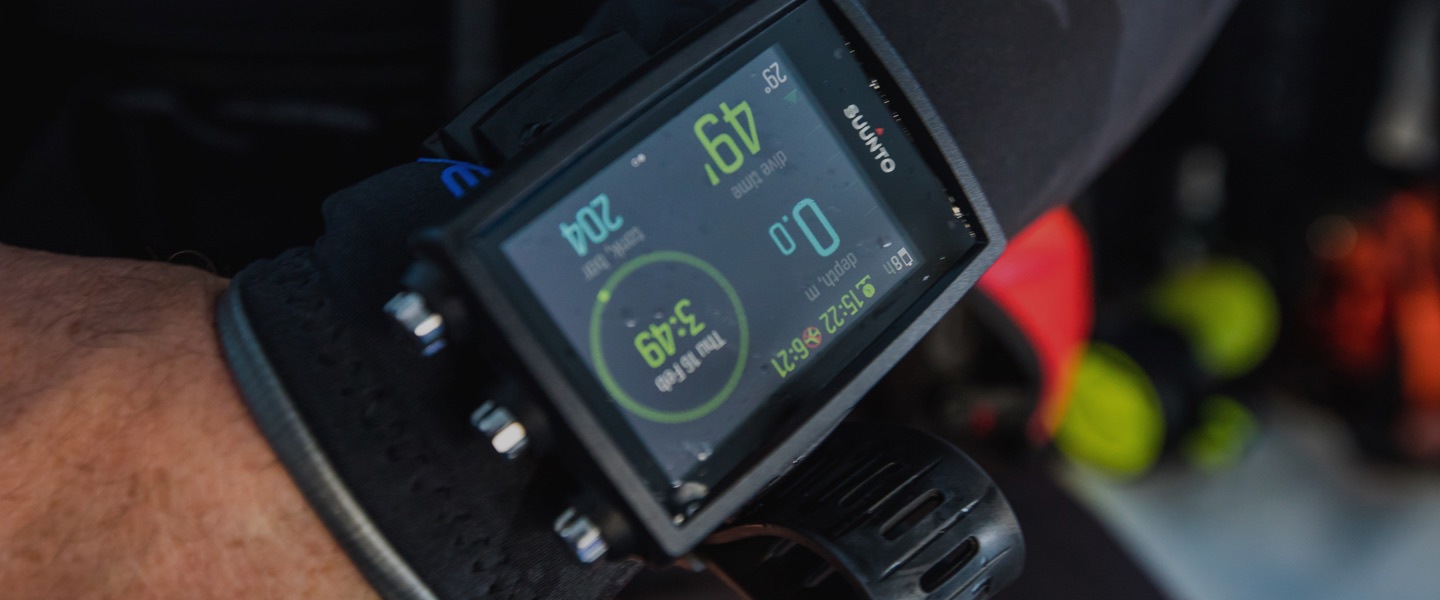SAFETY CHECKLIST PRIOR TO YOUR DIVE
To increase your dive safety, make absolutely sure that you know your dive computer and have it set up as you want before getting into the water. Before leaving on a dive trip, it is highly recommended that you inspect your dive computer closely to make sure everything is functioning properly. Always ensure that you use backup instrumentation, including a depth gauge, submersible pressure gauge, timer or watch. At the dive site, you should perform your manual checks before entering the water.
For the dive computer, ensure that:
- Your dive computer is in the correct mode and the display is working as expected.
- Altitude setting is correct.
- Personal setting is correct.
- Deepstops are set correctly (if available in the device).
- Unit system is correct.
- Compass is calibrated (if available in the device).
- Make sure your device has sufficient battery or is charged. For further information on the battery in your device, please check out the user guide.
- All primary and backup gauges for time, pressure and depth, both digital and mechanical, are showing correct consistent readings.
- If Suunto wireless transmitters or Tank PODs are in use, connections are working and gas selections are correct.
If you suspect that your dive computer’s display is providing you with inconsistent data, inaccurate data, or an error message before the dive, do not dive with it. Write down the product name, serial number and a description of the matter. Contact an authorized Suunto Service Center for inspection.
PERSONAL SETTINGS
The personal setting can be used to adjust the algorithm conservatism to fit your decompression sickness susceptibility. There are several factors that can affect your susceptibility to decompression sickness, such as exposure to low temperature, fitness level, obesity, stress. Such factors vary between divers, as well as from one day to another.
Whenever it is believed that factors that tend to increase the possibility of decompression sickness exist, use the personal setting to make the calculations more conservative.
ALTITUDE SETTINGS
In addition to the personal setting, Suunto dive computers can be adjusted for diving at different altitudes. Before high-altitude diving, you need to adjust the altitude settings so that the calculations take the high altitude into account.
This setting automatically adjusts the decompression calculation according to the given altitude range. You can select from three ranges:
- 0 – 300 m (0 – 980 ft) (default)
- 300 – 1500 m (980 – 4900 ft)
- 1500 – 3000 m (4900 – 9800 ft)
The atmospheric pressure is lower at high altitudes than at sea level. After traveling to a higher altitude, you will have additional nitrogen in your body, compared to the equilibrium situation at the original altitude. This 'additional' nitrogen is released gradually over time and equilibrium is restored. It is recommended that you acclimatize to a new altitude by waiting at least three hours before making a dive.
